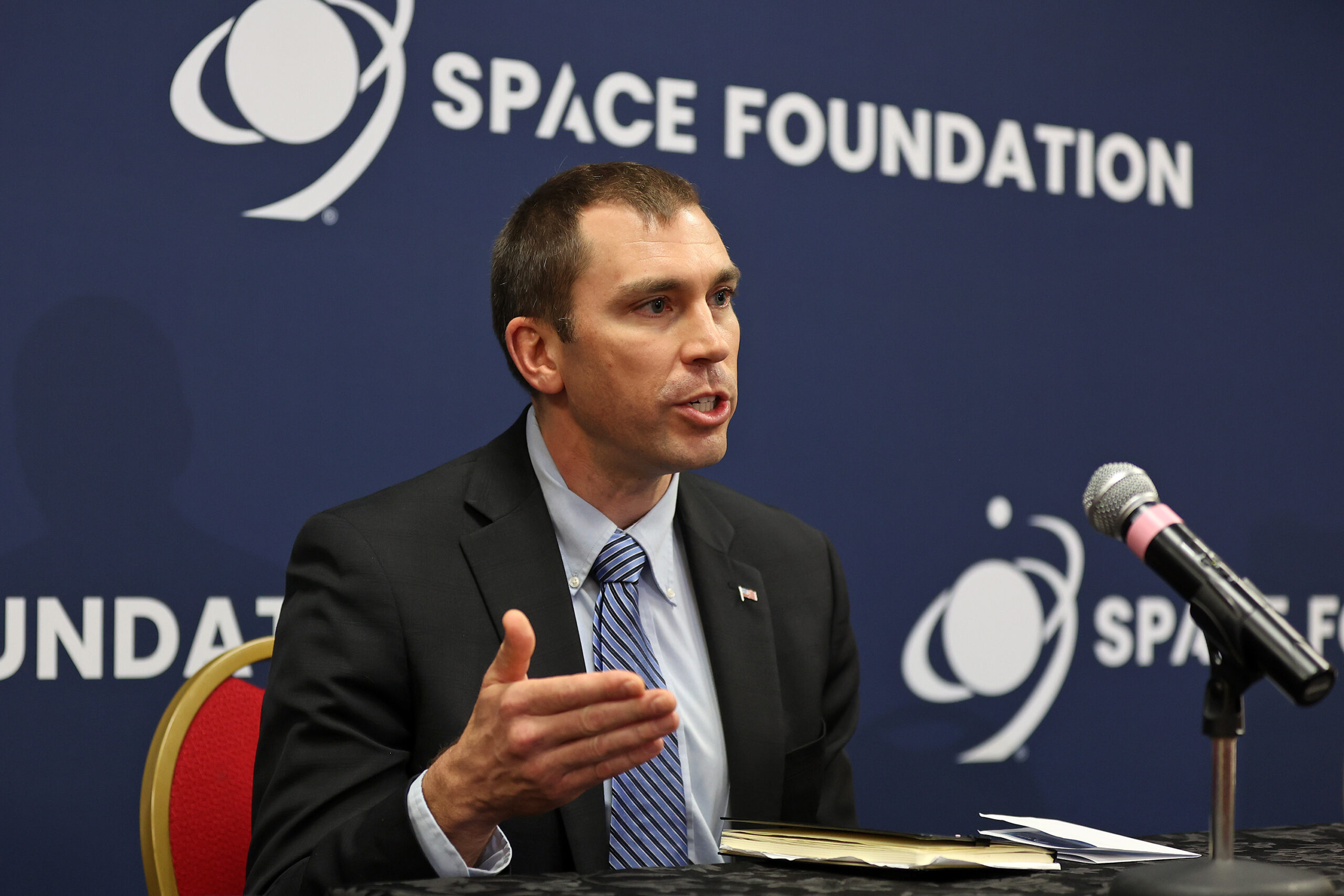The Space Force is requesting an additional $200 in 2023 to fund two launches of missile-tracking satellites
COLORADO SPRINGS – The U.S. Space Force is requesting an additional $200 million in fiscal year 2023 to launch satellites for the Space Development Agency’s missile-tracking constellation.
The funding for additional launches was included in a $600 million “unfunded requirements” list the Space Force submitted to Congress April 6. The other $400 million is for weapons systems upgrades and classified technologies. These requests would be added to the budget proposal the Biden administration released March 28.
Derek Tournear, director of the Space Development Agency (SDA), said two more launches need to be funded in 2023 to accelerate the deployment of a $2.5 billion missile-tracking constellation that the agency initially planned to start launching in 2026 but is now looking to accelerate to 2025.
SDA’s Tracking Layer, a constellation of infrared sensing satellites in low Earth orbit, has emerged as a top priority for the Pentagon amid concerns that current defense systems might not be able to detect high-speed maneuvering missiles. The Tracking Layer is envisioned as a global network of eyes in the sky that would provide a defensive shield against Russian and Chinese ballistic and hypersonic missiles.
As many as 100 satellites are planned to be added to the Tracking Layer over the next five years.
The program is getting a large influx of funding. The Pentagon in 2022 did not request funds for the Tracking Layer but Congress inserted $550 million to speed up the project. The Defense Department’s budget request for fiscal year 2023 includes $500 million for the Tracking Layer.
The first eight satellites – made by L3Harris and SpaceX – are projected to launch in 2023. The next batch of at least 28 satellites would launch in 2025.
After Congress passed the 2022 budget in March, SDA issued a request for industry bids for at least 28 satellites – Tracking Layer Tranche 1 – and proposals are due April 20.
At a news conference April 5 at the Space Symposium, Tournear said he expects the agency to award contracts in June so satellites can be ready for launch in 2025. Two vendors are likely to be selected to provide 14 or more satellites each. Tournear said he anticipates six to 10 bids for this contract.
The agency’s strategy, known as “spiral development,” is to buy satellites every two years so it can tap into the latest technologies and bring new vendors into the program. The next batch of satellites, Transport Layer Tranche 2, could have as many as 50.
SDA also is developing a global network of broadband satellites in low Earth Orbit known as the Transport Layer. The data collected by Tracking Layer satellites would be sent via optical links to the Transport Layer so if a missile threat is detected, its location and trajectory data can be transmitted securely through space and downlinked to military command centers.
“I think that proliferated low Earth orbit with spiral development is now accepted as an activity that will provide us the capabilities we need in the future,” Tournear said. “And if you look at the plus-ups that we received from Congress in 2022, that is an endorsement of our ability to be able to deliver on the capabilities that have been promised.”
The Pentagon’s proposed 2023 budget includes $314 million for three launches for the Transport Layer. Tournear said the budget submitted March 28 did not include any Tracking Layer launches because that proposal was put together before Congress added $550 million for tracking satellites.
The congressional add-on meant SDA had to move up the procurement of the satellites and the launches, Tournear said.“When the president’s budget request for 2023 was submitted from the department, we didn’t anticipate launching as early as 2025. So we’re working with the appropriators to correct any mismatch.”
Because of the lead time required by the Space Force’s national security space launch program, launches are funded two years before the actual launch.
